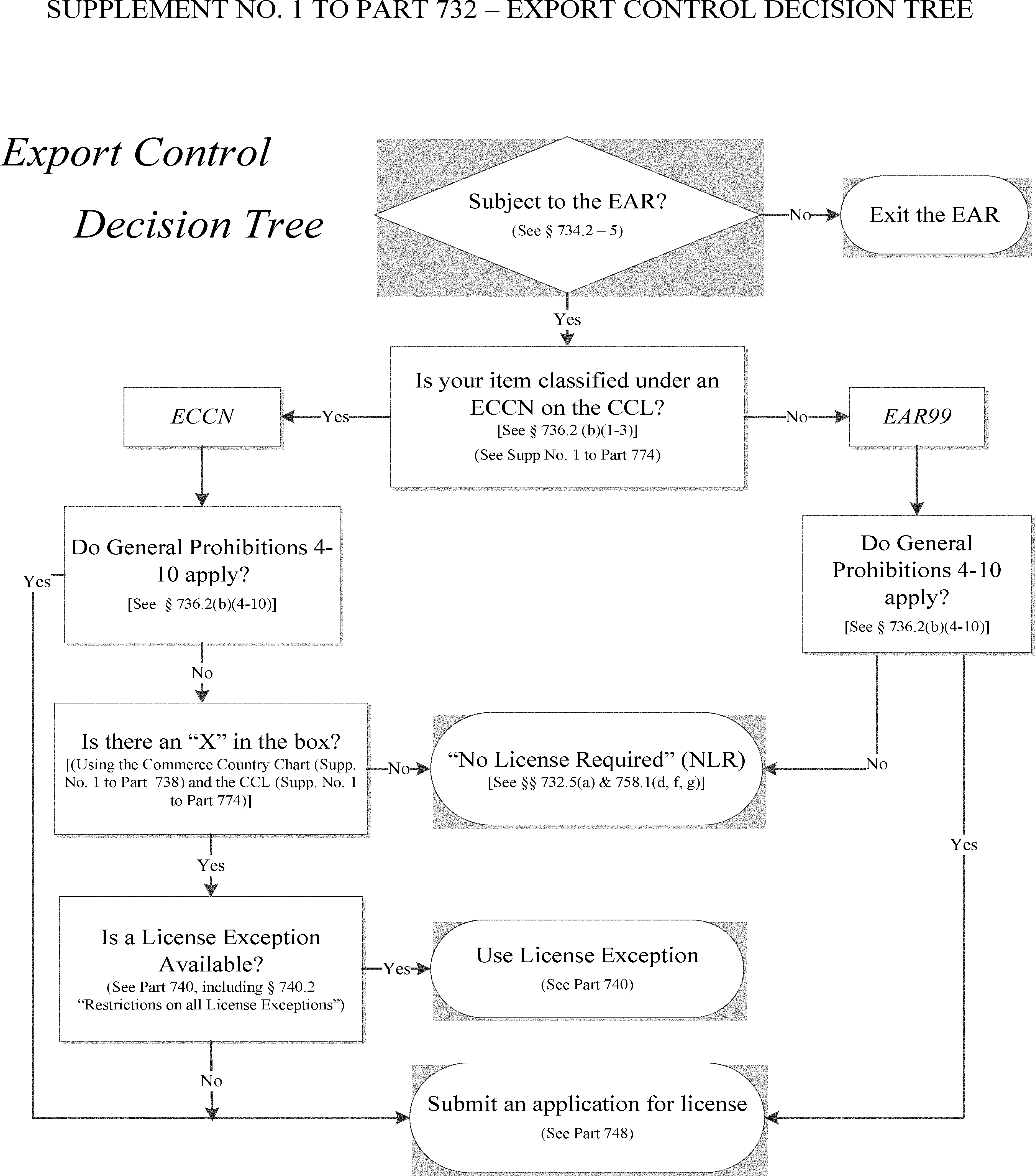zuletzt geändert am 05.09.2023
Ob Ihre Ausfuhr dem US-Recht unterliegt, wird in einem umfassenden Verfahren geprüft. Die US-Gesetze bieten dafür den sog. Export Control Decision Tree (ECDT) an, der in Anhang 1 zu Part 732 (Steps for using the EAR) gesetzlich geregelt ist. Dieser Teil soll helfen, die Verpflichtungen im Rahmen der EAR zu bestimmen, indem er in den §§ 732.2 bis 732.5 dieses Teils logische Schritte auflistet, die bei der Überprüfung dieser Vorschriften durchzuführen sind.
Hinweis:
Voraussetzung der Durchführung des ECDT ist aber der erste Prüfungsschritt: Subject to the EAR?
Hier ist zunächst zu prüfen, ob das auszuführende Gut überhaupt den EAR unterliegt. Das ist bei US-Gütern immer der Fall. Güter, die in Europa hergestellt wurde, unterliegen nur in Ausnahmefällen den EAR (de minimis, US-Technologie u.a.). Allerdings kann das US-Exportrecht aufgrund einer Vielzahl anderer Umstände gelten (US-Person des Ausführers, Abwicklung in US-Dollar, extraterritoriale Wirkung von US-Sanktionen u.a.).
Die Prüfung nach ECDT betrifft nur das Gut selbst und stellt nicht die vollständige Prüfung des US-Exportrechts dar!
15 CFR § 732.1 lit. b EAR – Steps overview
Facts about your transaction. The following five types of facts determine your obligations under the EAR and will be of help to you in reviewing these steps:
- What is it? What an item is, for export control purposes, depends on its classification, which is its place on the Commerce Control List (see part 774 of the EAR).
- Where is it going? The country of ultimate destination for an export or reexport also determines licensing requirements (see parts 738 and 774 of the EAR concerning the Country Chart and the Commerce Control List).
- Who will receive it? The ultimate end-user of your item cannot be a bad end-user. See General Prohibition Four (Denial Orders) in § 736.2(b)(4) and parts 744 and 764 of the EAR for a reference to the list of persons you may not deal with.
- What will they do with it? The ultimate end-use of your item cannot be a bad end-use. See General Prohibition Five (End-Use End-User) in § 736.2(b)(5) and part 744 of the EAR for general end-use and end-user restrictions.
- What else do they do? Conduct such as contracting, financing, and freight forwarding in support of a proliferation project (as described in § 744.6 of the EAR) may prevent you from dealing with someone.

